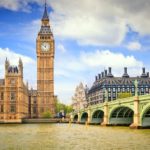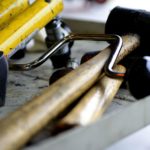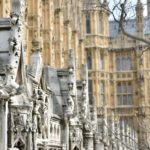
Jovica Trajkovski [CC BY-SA 3.0 (http://creativecommons.org/licenses/by-sa/3.0)], via Wikimedia Commons
—
The vital restoration and renewal of the Palace of Westminster is due to take place within the next 5 years and was debated in the House of Commons on 25th January (it can be watched online here).
A debate pack published by the House of Commons Library gives a detailed overview of the issues at play including information about how and when this will take place and how much this will approximately cost. Currently, the most viable solution would be a full decant of parliament to allow these maintenance works to take place.
This project will inevitably affect many of us and this page aims to highlight the most frequently asked questions and provide you with the answers you need.
Why is the Restoration and Renewal project needed?

By Senior Airman Areca Wilson (https://www.dvidshub.net/image/1841211) [Public domain], via Wikimedia Commons
The current ‘patch and mend’ approach tackles only the highest risk problems and is no longer sustainable, as the rate at which the work can be carried out is slower than the rate at which the building is deteriorating
What options have been suggested for this project?
Three main options were suggested by the appraisal team, these were:
- Rolling Programme: Parliament remains in Westminster with minimum work being undertaken around them. This would take up to 32 years, during which both chambers would have to close for between 2-4 years at different times. The estimated cost would be £5.7 billion. There would be high levels of noise and disruption and this option would would be the least predicable in terms of time and cost.
- Partial Move Out: This option would involve first the Commons, and then the Lords, moving to temporary accommodation outside the Palace. This approach would take around 11 years. A do-minimum cost is estimated around £3.9 billion, whereas an approach with some improvements looks to cost approximately £4.4 billion.
- Full Move Out: If both houses vacated the Palace completely, the work would take around 6 years and would cost approximately £3.5 billion with some improvements and £3.9 billion with significant improvements. Risks to the continuous running of Parliament would also be significantly reduced should appropriate temporary accommodation be found.
What was the Joint Committee’s main recommendation?

Cristian Lorini [CC BY-SA 3.0 (http://creativecommons.org/licenses/by-sa/3.0)], via Wikimedia Commons
On 8th September 2016, the committee concluded that “in principle, a full decant of the Palace of Westminster presents the best option under which to deliver this work.” (taken from Restoration and Renewal Debate Pack ) This option offered the safest, quickest and most cost effective option for the vital maintenance works to take place. It would also provided the greatest opportunity for meeting the needs of a 21st Century Parliament building.
The appointment of The Delivery Body (which would take the programme forward) and a Sponsor Board (which would oversee the project, ensuring it met its objectives) would be the next stage in the Restoration and Renewal project, but these can not be formed until both houses have decided on a course of action.
What will the proposed recommendation mean in practice?

By Snapshots Of The Past [CC BY-SA 2.0 (http://creativecommons.org/licenses/by-sa/2.0)], via Wikimedia Commons
In practice, this means the temporary chambers will be designed to look similar to the current chambers, with the same layout, floor space and division lobbies (although fixtures and fittings will not be as elaborate as in the current Chambers). Richmond House has been identified to potentially house the House of Commons and also to provide office accommodation. There is also discussion of using the Royal Gallery as a chamber.
There will still be space for members of the public to watch parliamentary proceedings in person and for them to meet their elected representatives. However, some ceremonial events may need to be adapted or held in alternative locations. Overall, the main objective of the Joint Committee is to cause as little disruption as possible for all concerned.
What would a renovated Palace look like?
A renovated Palace would serve as the continued home of the UK Parliament as well as an important UNESCO World Heritage Site. It would contain all the services needed by a modern, accessible, accountable parliament, with better, safer access for those who work in and visit it.
The restoration would reduce the current risk of interruption to Parliamentary business and would address:
- Complete replacement of the antiquated heating, ventilation, electrical, water and drainage systems
- Installation of new fire safety systems

By Sjukmidlands (Own work) [CC BY-SA 4.0 (http://creativecommons.org/licenses/by-sa/4.0)], via Wikimedia Commons
- Safe removal of asbestos
- Significantly improving disabled access in the Palace, which does not currently meet modern standards
- Improving health and safety standards
- Extensive conservation and renewal of stonework
- Repairing the 3,800 bronze windows in the Palace
- Tackling the Palace internal plumbing requirements and pipework and guttering externally
- Replacing the sewage ejector system, which was installed in 1888 and is still in use
- Installing information and communication technology necessary for a 21st century Parliament
- Repairs and conservation work to the historic interiors which cannot be carried out between sittings of Parliament.
